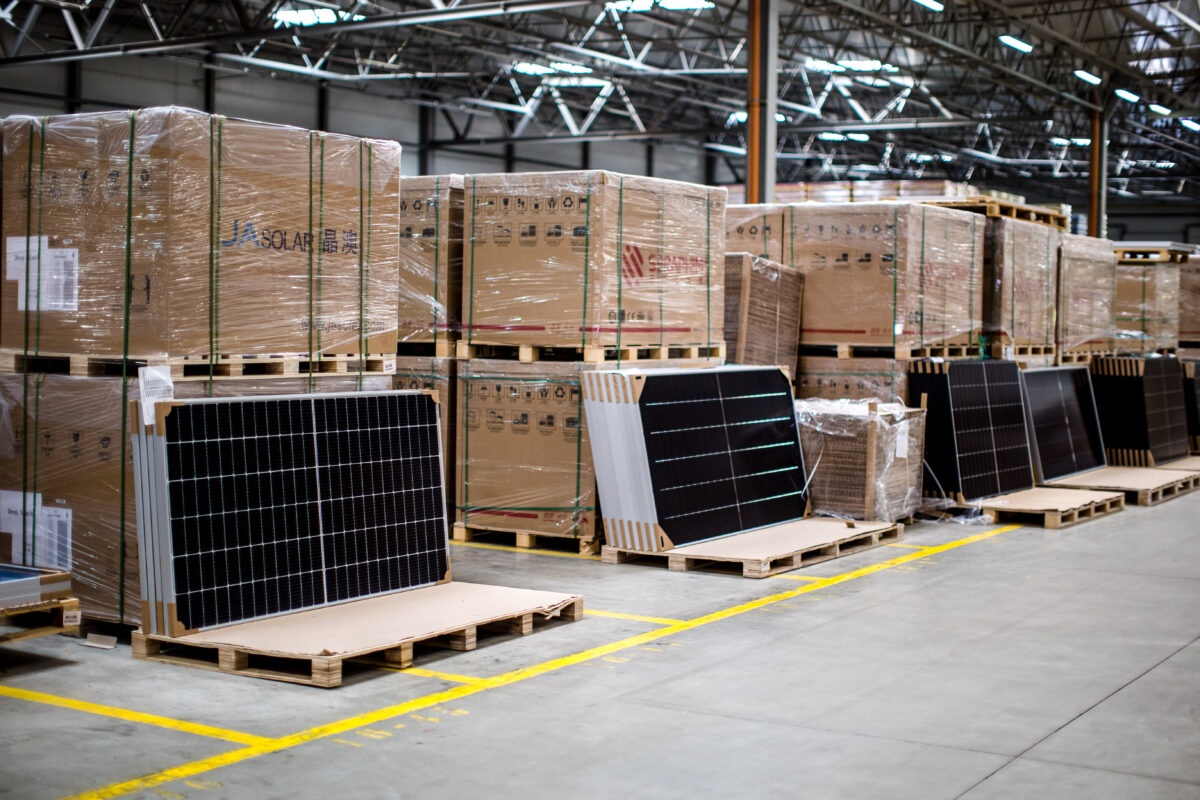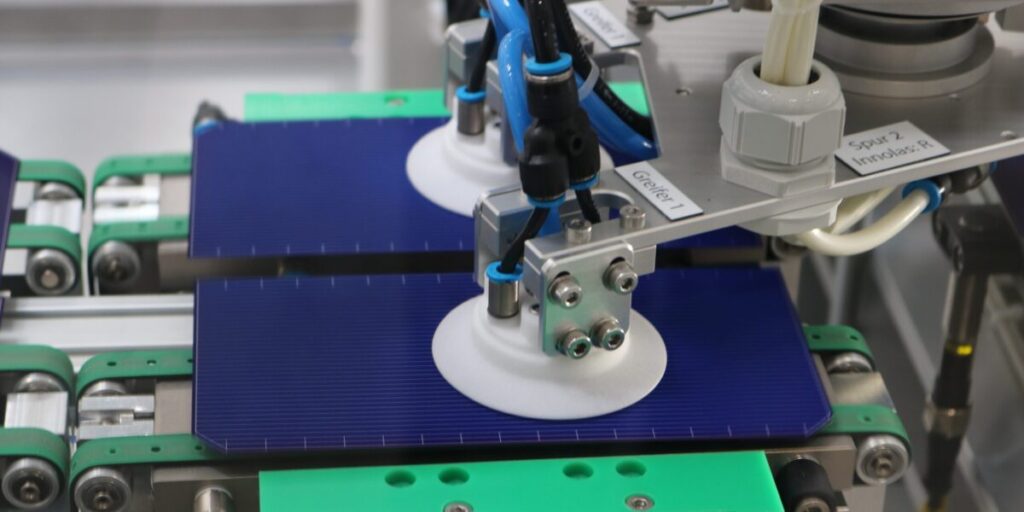https://www.pv-magazine-india.com/2023/10/25/europe-may-go-back-to-normal-inventory-levels-by-june-2024/
Europe may go back to ‘normal’ inventory levels by June 2024

Image: Menlo Electric
From pv magazine Global
Norwegian consultancy Rystad’s recent data indicates around 80 GW of unsold PV panels in European warehouses, raising concerns of a growing solar module glut. These figures have sparked reactions, with some doubting their accuracy, given Rystad’s previous estimate of 40 GW in mid-July.
“I was not surprised by the figure itself but by the trend,” Bartosz Majewski, CEO of solar distributor Menlo Electric, told pv magazine. “As a distributor, we have decided to limit inventory as much as possible, in anticipation of the upcoming winter and the price drop that happened at the beginning of July. Even though the prices are decreasing since Q4 last year, they have then been sliding gradually through Q1 and Q2, but in Q3 the prices dropped by 30% in China – this is what really caught many distributors by surprise.”
Majewski said Menlo reduced its module inventory by a factor of 2.5 between July and the end of September.
“Now we are well below our one month’s worth of sales,” he explained. “Rystad probably worked on different substocks or categories. For example, if modules are sold from Chinese manufacturer to their European subsidiary, or a distributor, under Cost, Insurance and Freight (CIF) incoterms, then they are formally exported the moment they are loaded on the ship. This is why they may appear that as European “stocked“ modules, even though they are still at sea and haven’t reached Europe yet. It takes roughly six weeks for these panels to come to Europe. So, if you assume that the Chinese are exporting 8 GW to 10 GW per month, that would mean that there would be about 10 GW to 15 GW worth of stock at sea, not in warehouses.”
Majewski explained that manufacturers have two types of warehouses: one set is “committed to buyers,” where existing contracts await module deployment, and the other is “free,” representing regular stock managed by smaller manufacturers. Additionally, distributors and installers maintain their own stocks, with distributors responsible for a substantial portion, approximately 30%, and installers also holding significant inventories, according to the CEO.
“We do have some clients that have purchased significant stocks in anticipation of this season and some of them are still going through these stocks, although it is already October.”
Filip Sypko, general manager key accounts at Menlo Electric, that the tens of gigawatts of stored solar power in Europe primarily serve residential and commercial installations.
“If you look at the utility scale projects, the ordering and deliveries tend to be happening as we go,” he stated. “There is no significant inventory of bifacial modules in Europe and this is mostly because distributors usually don’t stock up bifacial products.”
He said that numerous modules intended for utility-scale projects are listed as “stocked” even after installation because some solar plants were never completed or connected to the grid. However, these modules are no longer stored in warehouses.
“We have heard of several developers and EPC contractors are having issues in connecting their plants to the grid this year in Europe,” he said.
Most of the modules stored in Europe are based on PERC technology, with the result that the related market segment, mostly residential and C&I installations, is highly saturated.
“There is much oversupply and is very difficult to make positive margins there,” Majewski said. “For n-type products, it is a bit different, as it is still possible to make some positive margins.”
According to Majewski, n-type is currently only €0.01 more expensive than p-type.
“For p-type, it doesn’t matter at what price it was purchased, but at what price the buyer is willing to buy. All these modules in European warehouses will have to be sold by the end of this year, which means that regardless of what was the purchase price in the market, people will try to sell at the current market price because they need to release cash to pay their bills. For many companies it will be a matter of survival,” he said. For this reason, these stocked modules, especially those relying on p-type technology, may now be offered at a lower price than new arrivals from China.
When the bottom will be reached is unclear and installers will not wait indefinitely.
“You can wait, wait and wait but some installation just need to be delivered by the end of the year,” Majewski said.
Skypo expressed doubt about the possibility of experiencing another substantial decrease in solar module prices for utility-scale projects. He said that delaying the implementation of these projects results in lost generation and revenue. He also noted that expenses related to constructing photovoltaic farms, such as transformer stations and support structures, have not decreased, and labor costs have increased. While predicting the future remains uncertain, he suggested that the overall cost of PV farms may gradually increase.
Majewski believes there will be a limit to further module price drops in the months to come.
If you look at the margins made by the polysilicon and wafer manufacturers, and at those made by module makers, you realize that panel producers have not benefitted that much from the upward trend of the last two years. It was mostly the polysilicon and wafer manufacturers that captured windfall profits,” he said. “Now, however, both polysilicon and wafer producers are largely operating close to their marginal cost. So, it means that there is not too much potential for the prices to go significantly down further. They may continue to slide slowly but not as quickly as we have seen in Q3 2023.”
Majewski said that while there may be exceptionally low prices for specific batches, there is already a range of prices from €0.12/W to €0.13/W. For those with flexibility in their module preferences, attractive deals can be found. However, those seeking specific sizes or brands are advised to secure their deliveries promptly.
Regarding the module inventory levels, Majewski said he anticipates a return to normal levels in Europe by the end of June 2024. He said that the first and second quarters of the year are the likely timeframe for Europe to regain its standard inventory levels. By the end of June, issues related to “old” stocks may no longer be a concern, but the possibility of distributors once again committing to excessive volumes in new contracts remains uncertain.
This content is protected by copyright and may not be reused. If you want to cooperate with us and would like to reuse some of our content, please contact: editors@pv-magazine.com.




